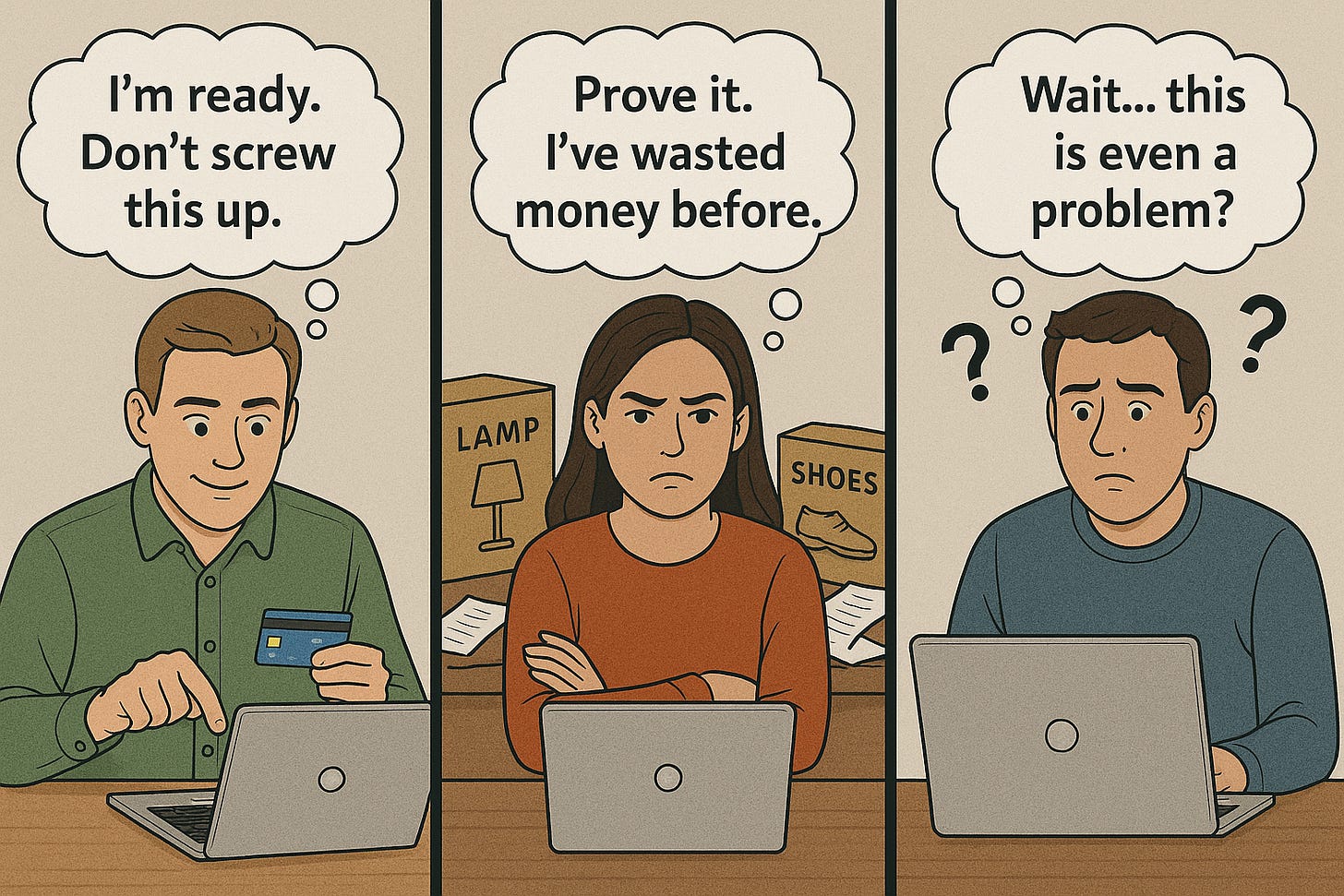10X Conversions #51
Welcome to 10X Conversions—your weekly dose of insights and strategies helping coaches, course creators, consultants, and their teams consistently achieve higher conversions, maximize ROI, and close more sales.
You’ve written what feels like the perfect sales page.
Every persuasion principle is applied. Social proof stacked. Objections handled. Call-to-action is crystal clear.
And yet… conversions disappoint.
So you do what most copywriters do: panic-edit. Rewrite the headline. Add more benefits. Throw in another testimonial.
All wrong moves.
Because the real problem isn’t your copy.
It’s that you’re not reading the room.
What "Reading the Room" Means in Copywriting
Imagine you’re at a networking event trying to convince someone to try your favourite restaurant.
Tell a foodie, “It’s the best Italian in town,” and they’re booking a table tonight.
Tell someone who meal-preps every Sunday the same thing and they’re thinking, “Why would I pay ₹2000 for what I can cook for ₹200?”
Same recommendation. Different person. Completely different approach.
Copy works the same way. The “room” is your prospect’s mindset when they hit your sales message.
And here’s the costly truth: most failed copy isn’t bad—it’s mismatched.
The 3 Mental States Your Prospects Live In
Every prospect arrives in one of three states:
1. The Eager Buyer
“I’m ready. Don’t screw this up.”
They already believe in your type of solution. They’re comparing you to competitors and just need proof and clarity. You’ll spot them searching directly for your solution, sticking around until the end of your webinar, or even emailing you with “When does this open?”
2. The Skeptical Shopper
“Prove it. I’ve wasted money before.”
They want the result, but doubt you can deliver. They’ve been burned by past offers, are browsing multiple competitors, and their guard is up. Think of the business owner who already sank ₹50K into ads that flopped—now every promise makes them squint harder. These buyers need overwhelming proof, safety nets, and guarantees before they trust you.
3. The Unaware Prospect
“Wait… this is even a problem?”
They don’t even realise they’re in the game. They stumble onto your content because they recognise the symptoms, not the problem. They’ll watch your “Why your ads don’t convert” reel but scroll past your sales pitch. They’ll nod at your free advice, binge your posts, but never once think: “This is for me.” Until you connect the dots, they stay blind to the solution.
The Million-Dollar Mistake
Here’s what kills conversions: writing to the wrong room.
The most expensive mistake? Writing skeptical-focused copy for eager buyers.
Picture this: someone lands on your page, card in hand, ready to buy. But your copy says:
“You might be wondering if this really works…”
“I know you’ve been burned before…”
Suddenly, they think: “Actually, I wasn’t skeptical until now.”
You just created doubt where none existed.
Match Your Message to Their Mental State
With eager buyers, don’t waste time on problem education. Show them what they get, prove it works, and make starting now the easiest decision in the world.
“We helped one agency cut client acquisition costs by 42% in six weeks. Here’s the exact system…”
With skeptical shoppers, lean into their doubt. Address it directly, stack undeniable proof, and give them a risk-free way to try.
“If you’ve bought marketing courses before and still struggle for leads, here’s why this one delivers results where others failed.”
With unaware prospects, begin with their frustration. Paint the pain in detail, then open their eyes to the cause and the cure.
“That nagging feeling you’re working twice as hard for half the results? There’s a reason for it…”
The Bottom Line
Conversions don’t die because your copy is weak.
They die because you wrote for the wrong room.
Diagnose first. Then write.
That’s the lever that changes everything.


